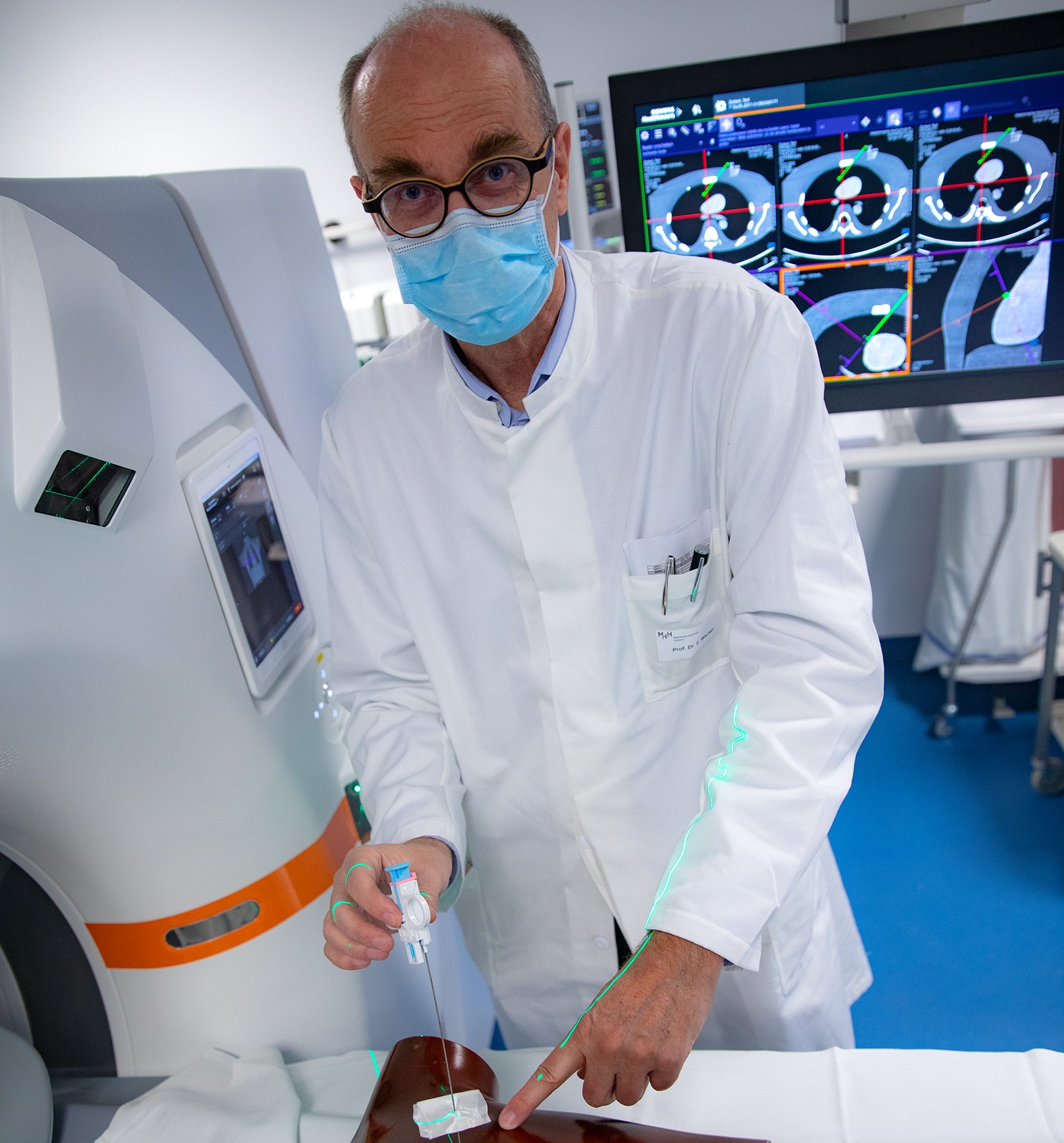MHH Radiology puts computer tomograph with integrated laser navigation into operation

Professor Wacker demonstrating how to work with the new computer tomograph on a model. The green laser beams mark exactly where the needle should be inserted. Copyright: "Karin Kaiser / MHH".
27.01.2022
Computer tomography (CT) is indispensable for modern diagnostics. The cross-sectional images provide important information about injuries and diseases of internal organs. But the technology also plays an important role in therapy - many interventions are performed under CT image guidance. A new CT scanner from the Institute for Diagnostic and Interventional Radiology at the Hannover Medical School (MHH) is especially suited for this purpose. The modern high-performance CT has integrated laser navigation. Thanks to this innovation, physicians can perform therapeutic interventions faster and more precisely. Patients also benefit from a lower dose of X-rays. The MHH is one of the first clinics worldwide to use such a device.
"The new computer tomograph is ideal for punctures, for example to take tissue samples or to remove pus accumulations," explains Professor Dr. Frank Wacker, Director of the Institute for Diagnostic and Interventional Radiology. With the help of navigation, the needle required for this can be placed in a targeted manner. Green laser beams on the patient's skin provide the coordinates and mark the exact puncture site. But not only that, they also guide the surgeons precisely to the target area in the organ concerned. "This means that oblique punctures are now also easier to perform. The path is determined by the laser beams," explains Professor Wacker. In his institute, the new device is also used for thermal ablations - tumours of the liver, kidney and lung are destroyed with heat.
Laser navigation itself has been around for a long time. Until now, however, it was only possible with an extra attachment on a CT unit. "In the new device, the function is completely integrated. This makes laser navigation much more precise, we need less time for the interventions and the patients are exposed to less radiation," says Professor Dr. Wacker. In addition, the new device is very suitable for the further training of junior staff. About 25 young physicians are being trained at the radiology institute.
The CT with laser navigation was launched at the end of last year together with another innovation, a photon-counting computer tomograph.
SERVICE:
For further information, please contact Professor Dr Frank Wacker, wacker.frank@mh-hannover.de, telephone (0511) 532-3421.